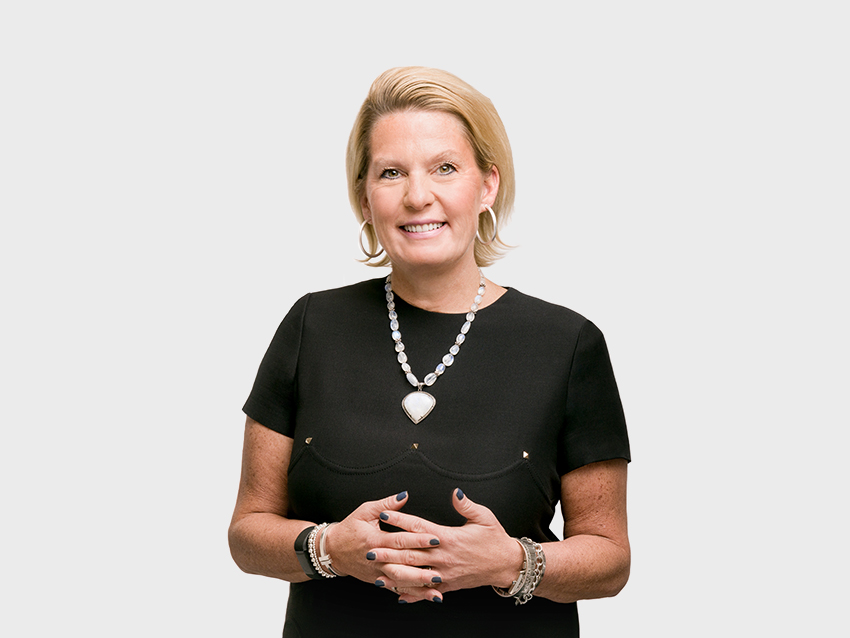Cleveland Conversations: Partnerships are Key to Cleveland’s Recovery
This interview is originally from Cleveland Business Journal by Mary Vanac on November 13, 2020.
Debbie Donley is passionate about Cleveland.
The founder and principal of Vocon, the architecture, interior design and workplace strategy firm based in Cleveland, lives by many of the words written by her uncle, the late George Voinovich.
Voinovich served in public office for 44 years as a state representative, county auditor, county commissioner, lieutenant governor, mayor, governer and U.S. senator from Ohio.
Donley likes to point out that Voinovich, as Cleveland mayor and a Republican, worked with George Forbes, a Democrat and one of the most powerful city council presidents Cleveland has ever seen, to rebuild the city during the 1980s after years of contentious infighting.
Voinovich’s mayoral campaign slogan was, “Together we can do it.” His vehicle was public-private partnerships, what he called 3Ps.
“Public-private partnership is the key to the recovery of our region,” Donley recently inscribed in a copy of her uncle’s book. Partnership also is a key to doing successful business in a volatile economy.
I talked with Donley about how her business has fared during the coronavirus pandemic. This interview was edited for clarity and brevity.
What are the most exciting projects your company has worked on this year?
We pivoted our New York office from active enterprise work with Fortune 500 companies to vibrant work with large landlords. We’re helping landlords reposition assets that once had retail at the base to attract tenants in a market that is a little bumpy.
While we think about what amenities will draw people to a building post-Covid, we also make sure the spaces are designed for social distancing and other practices to keep workers safe during the pandemic. We came out with our healthy workplace guidelines in April and have been working with clients and doing webinars on this ever since.
Then, there’s the announcement of Sherwin-Williams’ new world headquarters in Downtown Cleveland. We’re the interior architect for the project, and we’re really excited about that. We’re involved in helping them with the strategy of the project. We’re super excited to be part of the team building something that is so incredibly important to our region.
What design architecture and commercial real estate trends are you seeing in Cleveland?
People are definitely pausing. They are being much more thoughtful about their workplace decisions. If you’re going to start a project — let’s say your lease is up in early 2022 — you assume that there will be a vaccine for the coronavirus. You’re not going to use Covid planning, per se, but you are considering the impact of how your people performed virtually during the pandemic on the projection of space.
Our workplace strategy teams have been extremely busy helping people solve challenging questions like, “Are my people productive at home? Should I bring them back? When do I bring them back? How do I bring them back?” Through the lens of surveys and focus groups, our workplace strategy teams are thoughtfully helping leadership make decisions.
How has Covid-19 office practices hurt employees?
The lack of ability to mentor a young person and to properly onboard and train a new employee in a remote working environment is a problem. Architecture is a profession of teaching and learning. It’s important to sit shoulder-to-shoulder with somebody, listen to what they say on the phone or say ask questions.
Young people are saying, “I missing be with my boss. I haven’t seen my boss in eight months.” Or they’re asking, “How am I going to get promoted? How are we going to do my reviews?” We’re all making it work, but how much longer do we want to make this work?
How has the pandemic changed your business?
The pandemic has caused us to take a step back. We’ve always been a business that focuses on relationships and being ahead of the curve. We’re always looking for trends and ways that we can add value to our customers. We are deepening our partnerships, for example, with contractors or engineers, and figuring out ways that we can simplify and shorten the window through which we design and build something. So we’re exploring unique partnerships, and that represents exciting new frontiers.
